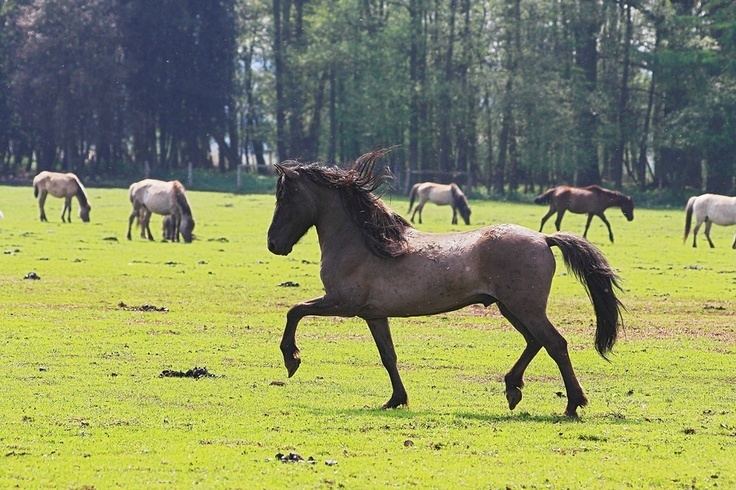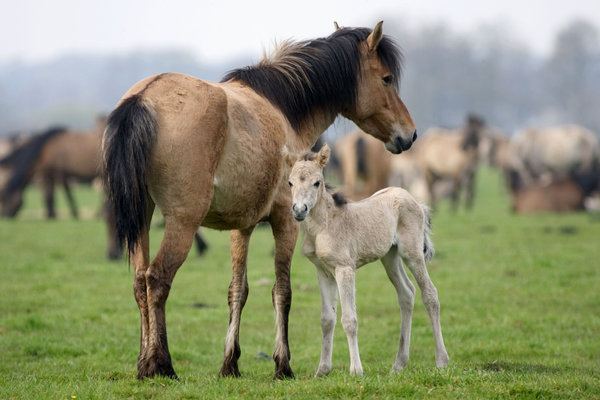Country of origin Germany Higher classification Horse | Scientific name Equus caballus Rank Breed | |
 | ||
Similar Exmoor pony, Bosnian Mountain Horse, Dartmoor pony, Sorraia, Dales pony | ||
The Dülmen is the only native pony breed in Germany, now that the Senner pony of the Teutoburg Forest is extinct. They make good children's ponies and adapt well to domesticated life. They are good for driving in harness, and often used to work the land.
Contents

Breed characteristics

The ponies usually stand 12 to 13 hands (48 to 52 inches, 122 to 132 cm), and look quite primitive. Some have the usual dun coloring, while others are bay, black, or chestnut, indicating infusion of outside blood. The ponies have steeply sloping hindquarters and a short neck. The breed’s head is medium sized with small ears and a slightly concave profile. The hind quarters are muscular and well developed, the hooves should be small, hard and rounded and the fetlocks not too pronounced and hairy. They have a full mane and tail.
Breed history
The Dülmen was found near the town of Dülmen, in the Merfelder Bruch area where ponies have been documented since the early 14th century. It is believed that the Dülmen developed from primitive types, as it still has some primitive characteristics.
The ponies lived in wild herds across Westphalia until the 19th century, when land was divided and separated and the ponies began to lose their habitat. There is only one wild herd left today, owned by the Duke of Croy, that roams 860 acres (3.5 km²) of the Meerfelder Bruch. The Dukes of Croy first helped the herd in the mid-19th century.
Modern conditions
The ponies are left to find food and shelter, must cope with illness and death. Therefore, only the strongest in the herd survive, promoting the toughness of the breed, and making them resistant to disease. Once a year, on the last Saturday of May, the ponies are rounded off and the foals separated. The foals are sold at a public auction, and the mares are returned with only one or two stallions.
